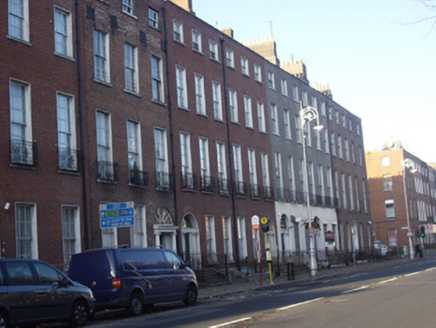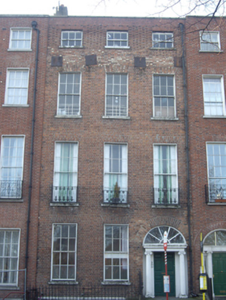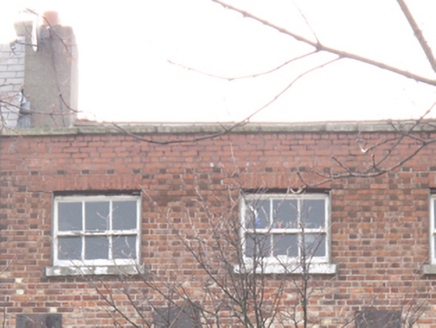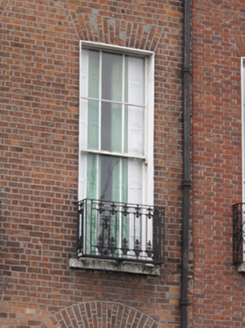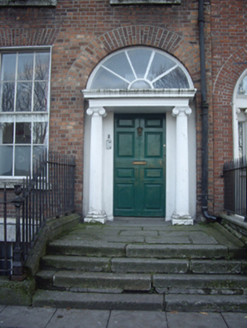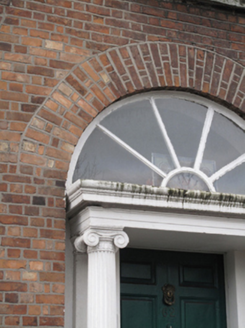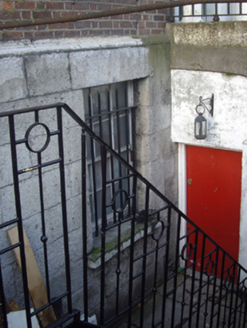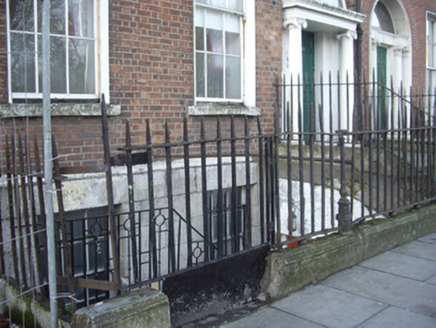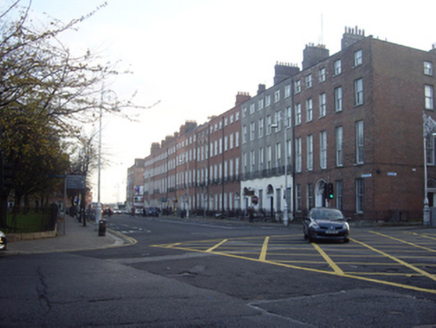Survey Data
Reg No
50010951
Rating
Regional
Categories of Special Interest
Architectural, Artistic
Original Use
House
In Use As
Apartment/flat (converted)
Date
1790 - 1810
Coordinates
315982, 235386
Date Recorded
30/11/2011
Date Updated
--/--/--
Description
Terraced three-bay four-storey house over exposed basement, built c.1800. Now in multiple occupancy. M-profile slate roof with rendered chimneystacks to south party wall. Roof hidden behind rebuilt parapet wall with granite coping and cast-iron hopper and downpipe breaking through to north end. Red brick walls laid in Flemish bond rebuilt to top floor with steel tie-plates. Cement rendered rear elevation abutted by full-height return. Moulded granite plinth course above coursed granite ashlar basement walls. Gauged brick flat-arched window openings with patent rendered reveals, granite sills and replacement timber sliding sash windows (original panelled shutters visible), six-over-six pane to lower floors and three-over-three pane to top floor. Decorative iron balconettes to first floor, wrought-iron window guards to second floor and wrought-iron grilles to basement. Gauged brick round-headed door opening with advanced painted masonry Ionic doorcase. Original timber door with eight raised-and-fielded panels flanked by pilasters and fluted Ionic columns supporting cornice with spoked timber fanlight. Door opens onto granite platform and four granite steps bridging basement. Platform and basement enclosed by original wrought-iron railings and cast-iron corner posts set on moulded granite plinth walls. Matching iron gate provides access to basement via steel steps.
Appraisal
No. 62 is one of only six original houses to survive on the main terrace of Mountjoy Square. The projecting Greek Revival Ionic doorcase is the only such example on the square and, together with its granite ashlar basement and overall composition, forms an important component of the square. Mountjoy Square was built on lands formerly belonging to Saint Mary’s Abbey and laid out in 1790 by Luke Gardiner II and completed by 1818. Originally called Gardiner Square, the plan was to develop a strong vista from Custom House to Mountjoy Square then on to the intended Royal Circus. Although failing to achieve his original ambitious plan for a palace façade with flanking domed pavilions, Mountjoy Square is more carefully laid out than the city’s other Georgian squares. After falling into serious neglect and dereliction throughout the twentieth-century resulting in the loss of one third of its original buildings, the square has since been repaired. The south and west sides were the worst affected and
